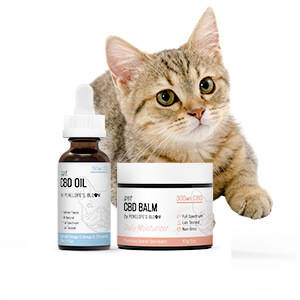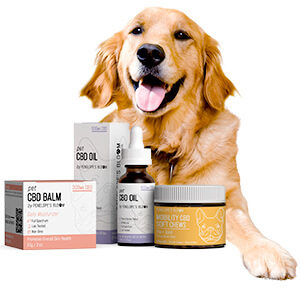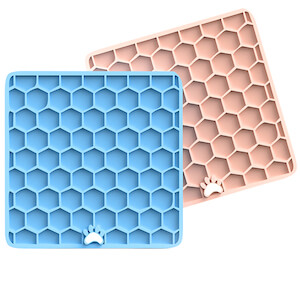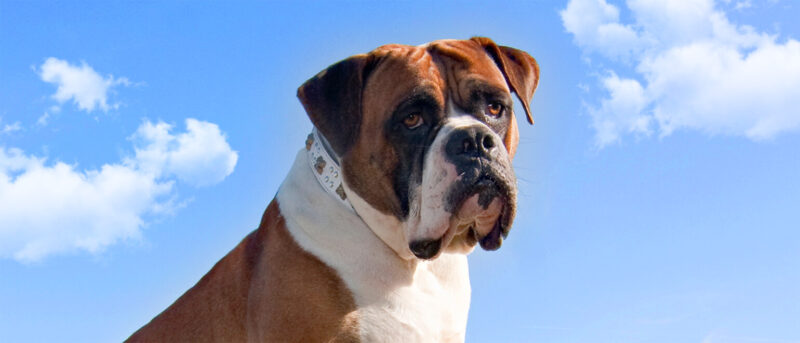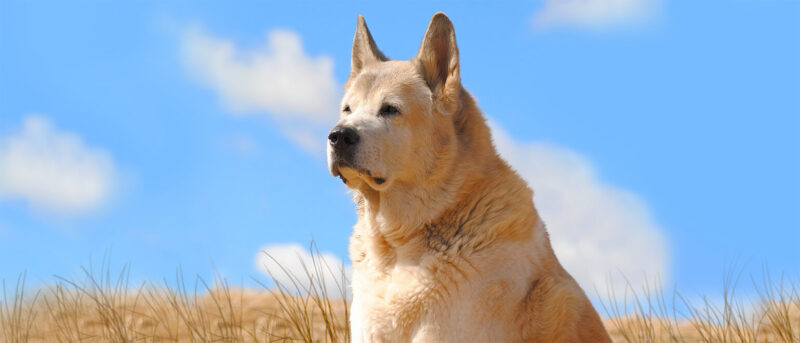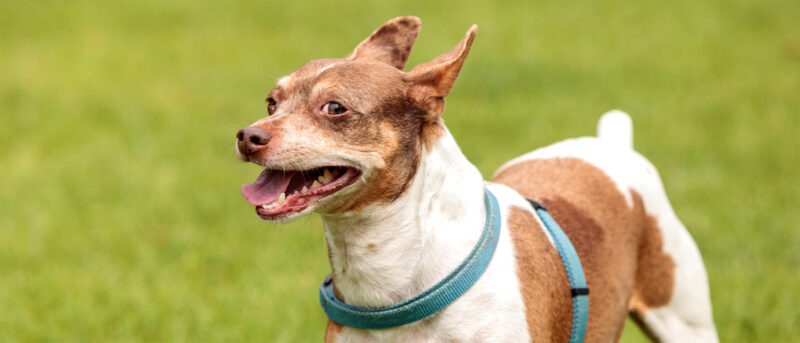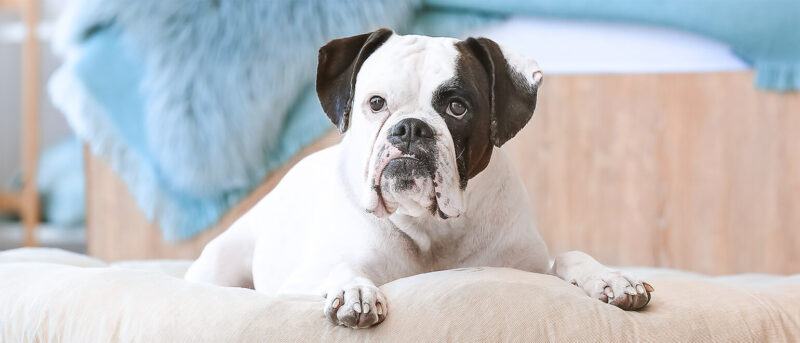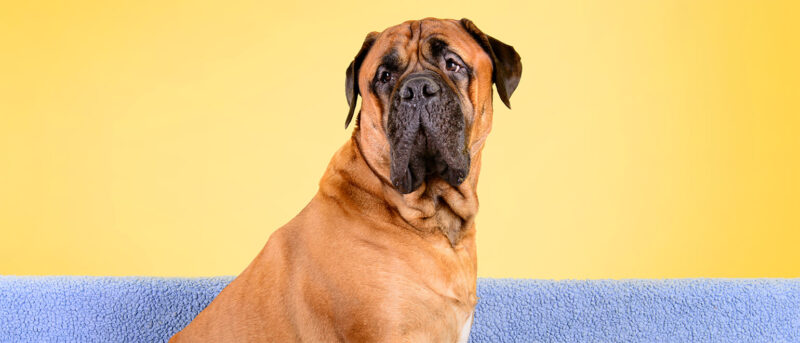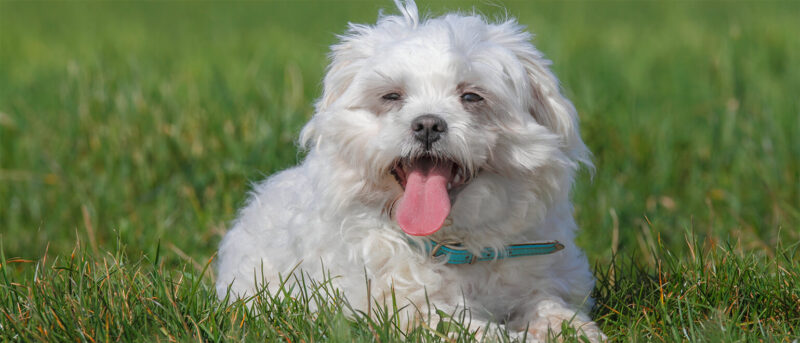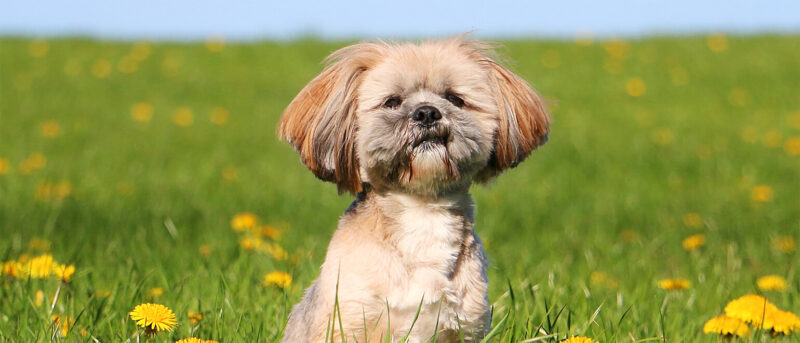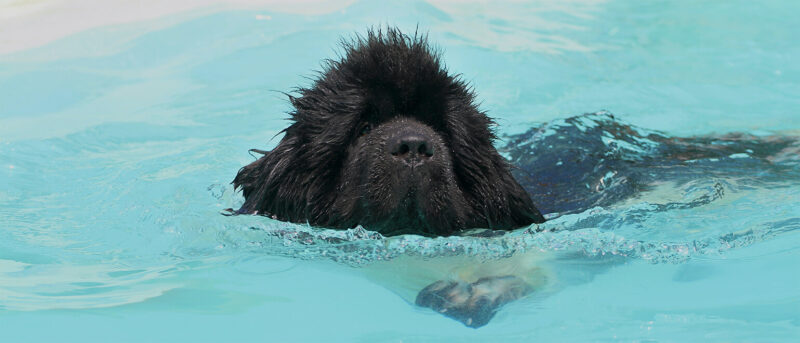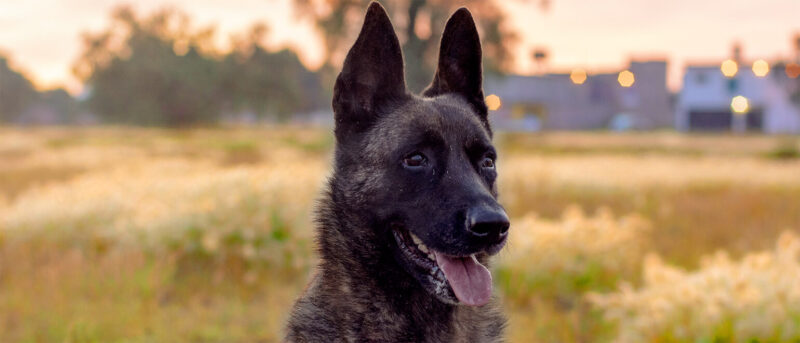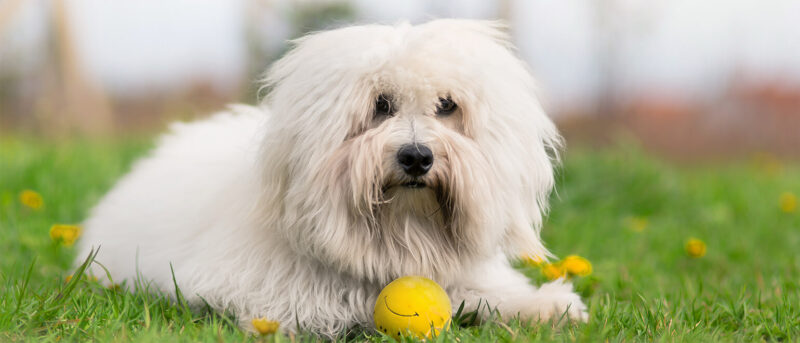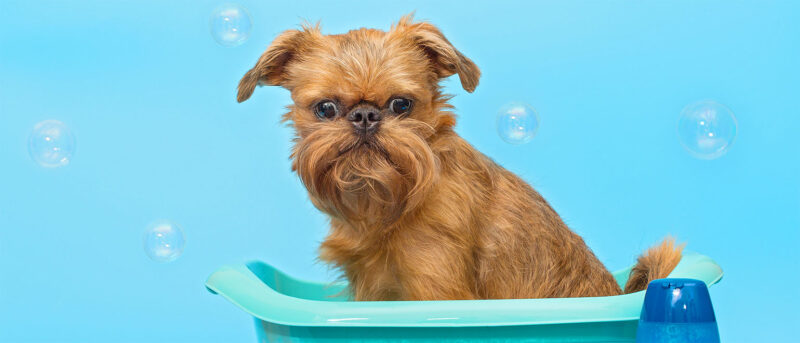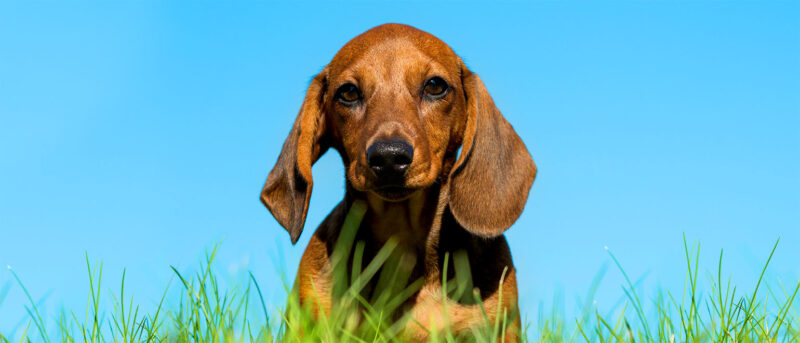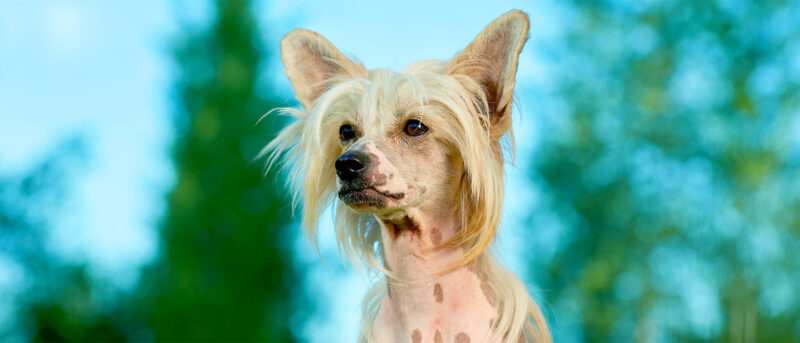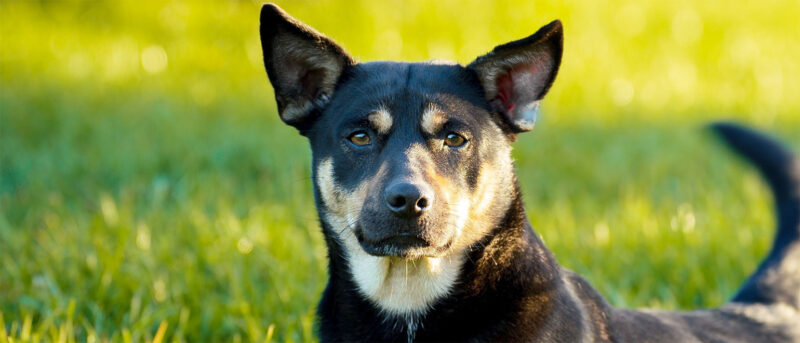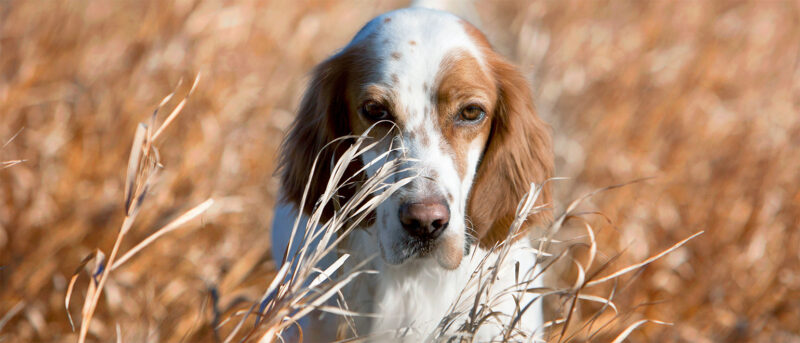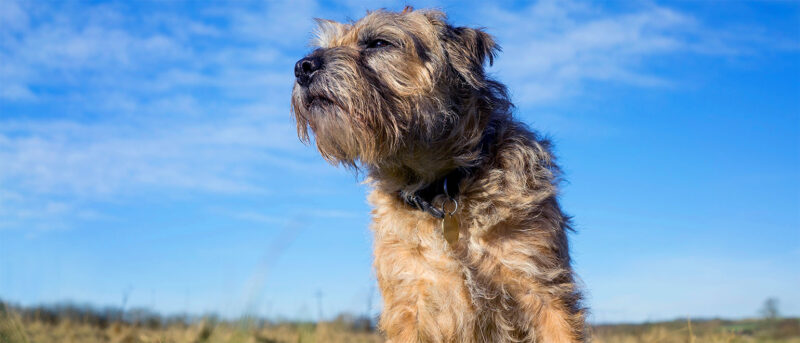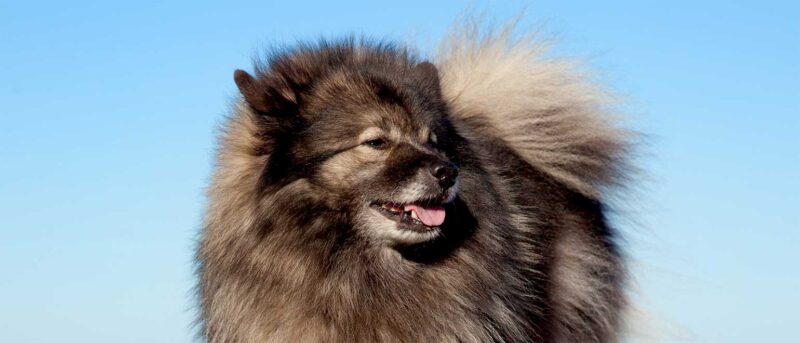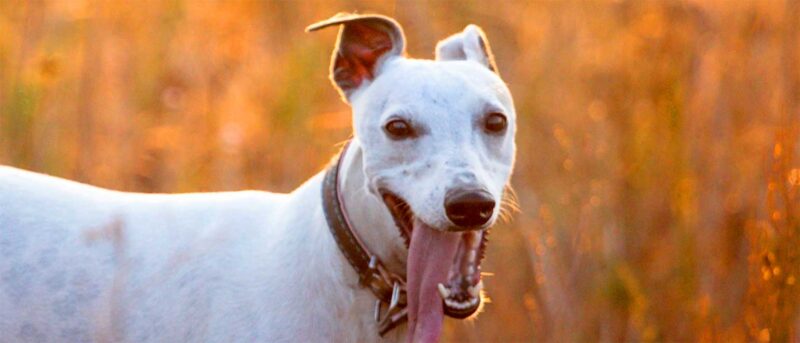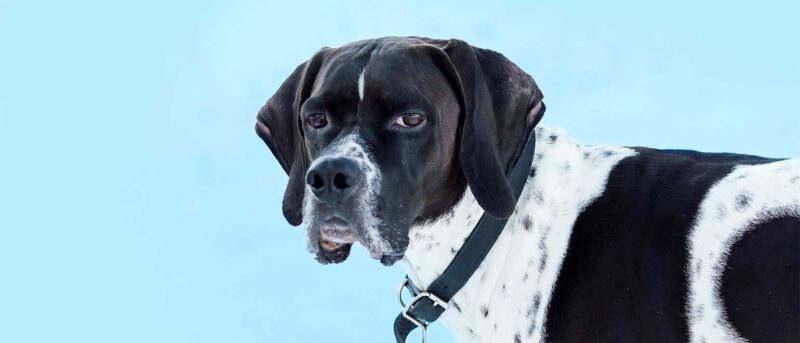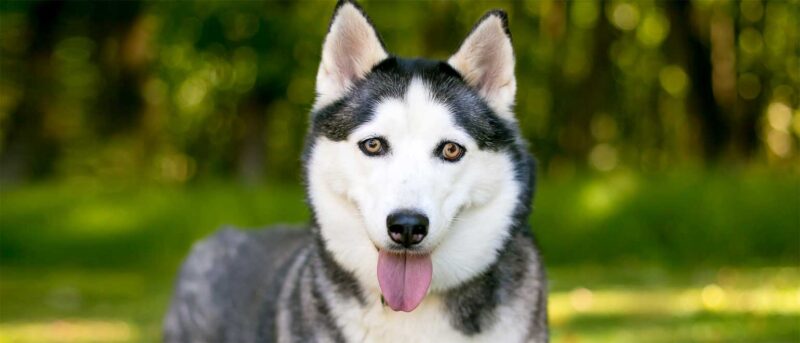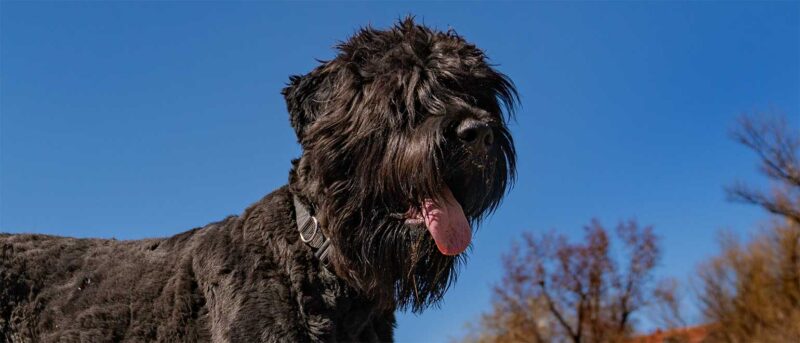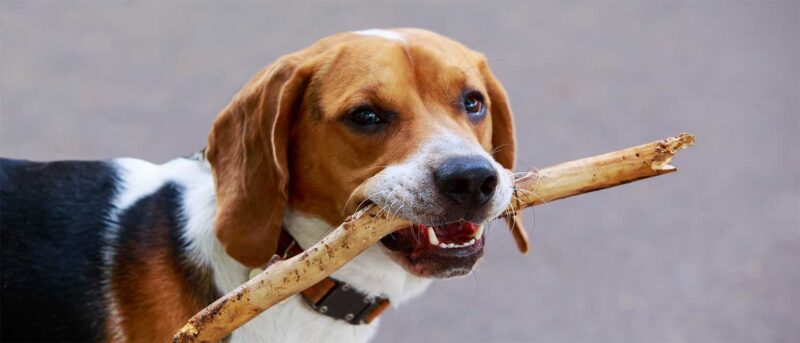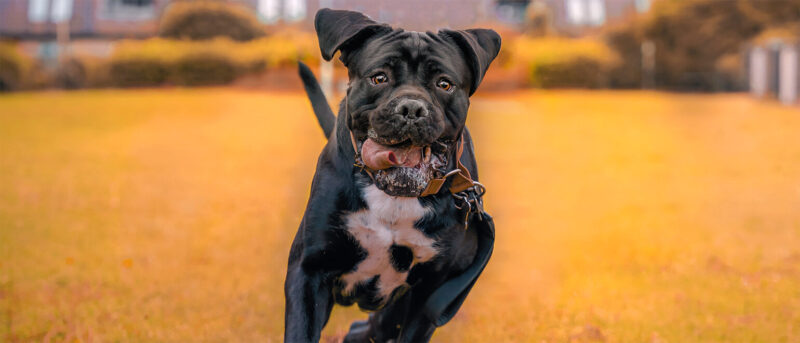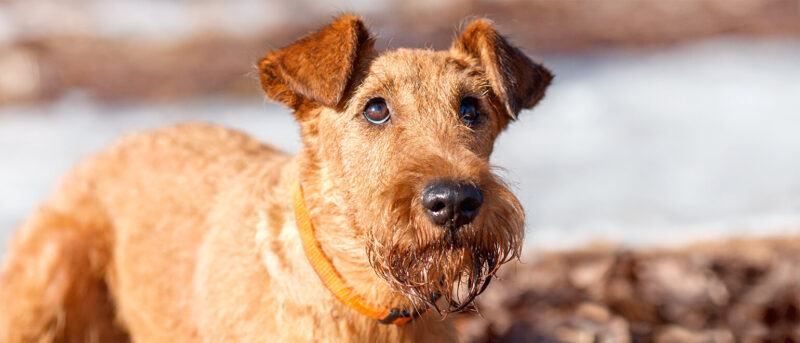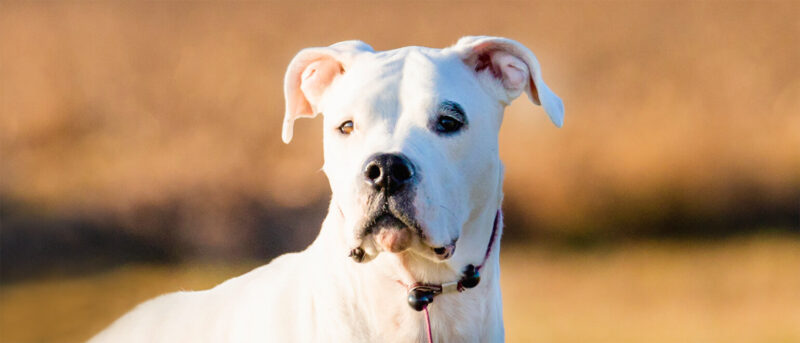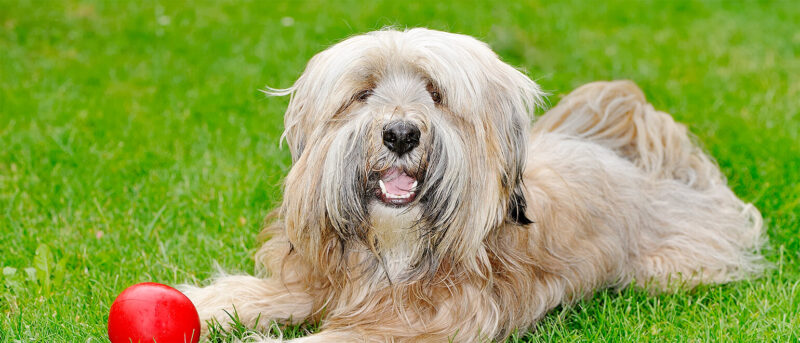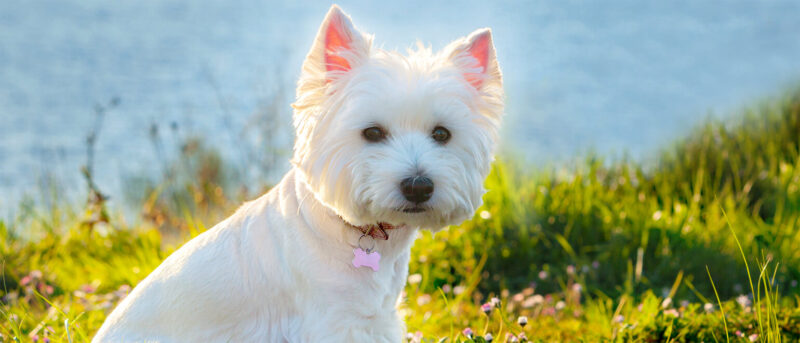Bloodhound Dog Breed: The Complete Temperament & Personality Guide
Despite their spooky name, Bloodhound dogs are a loving and legendary breed. They are famed for their keen sense of smell, which can sometimes lead them into trouble if left unsupervised. These talented canines can sometimes be stubborn because they are so locked in on a scent they ignore everything else (including your commands). With […]
Despite their spooky name, Bloodhound dogs are a loving and legendary breed. They are famed for their keen sense of smell, which can sometimes lead them into trouble if left unsupervised. These talented canines can sometimes be stubborn because they are so locked in on a scent they ignore everything else (including your commands).
With their signature droopy face that is prone to drooling, passersby might mistake this dog for being lazy but that is certainly not the case. These lovable troublemakers are active and friendly, and thrive when lavished with attention. These gentle giants also make incredible family dogs. Today, we will be taking a deep dive into this iconic breed. Just follow along to learn more!
Bloodhound Dog Breed Characteristics (Physical)
With their long, drooping face and large, dark eyes, Bloodhounds are one of the most recognizable breeds in the world. Bloodhounds have an oversized skull for their size and a sturdy bone structure. Their large faces feature loose skin, deep wrinkles, and big, floppy ears.
Intentionally bred as an endurance hunting dog, these precise pups can steadfastly follow a scent for days and can cover great distances with their large hind legs. Their big wide noses are ideal for sniffing around and locking in on faint scents.
Compared to most dogs, Bloodhounds have a relatively normal lifespan of around 10 to 12 years. The UK Kennel Club reported in 2024 that Bloodhounds had a median lifespan of 9.3 years, giving them a shorter lifespan than all other breeds.
Potential Bloodhound owners should be prepared to deal with a considerable amount of drool. With one shake of their head, they can fling their saliva up to 20 feet away. You can count on receiving many slobbery, wet kisses from your Bloodhounds.
Bloodhound Dog Breed Size
Known for their impressive size, Bloodhounds are a larger breed of dog with males growing up to 25 to 27 inches tall and typically weighing between 90 to 100 pounds. Female Bloodhounds are slightly smaller, reaching heights of 23 to 25 inches tall and generally weighing between 80 and 100 pounds.
While many dogs reach full maturity between 12 to 15 months old, Bloodhounds have a slower development rate. They typically enter adolescence around 12 months of age and reach full maturity by the time they are around 2 years old.
Bloodhound Dog Breed Personality
Proud and independent, the Bloodhound is generally described as easy-going when it comes to personality. That being said, they much prefer to do things their way and can be stubborn, making them trickier to train for new owners.
When Bloodhounds catch a scent that interests them, they get tunnel vision and become determined to track the smell to its origin. This trait can be very useful for hunting and helping law enforcement, but for the average pet owner, this obsessive trait can sometimes lead these pups into sticky situations if they are not monitored appropriately. Bloodhounds do best with owners who understand this instinctual need to sniff.
When given proper training, the Bloodhound’s affectionate personality shines through. A social but calm breed, they are very gentle and love being around people.
Bloodhound Dog Exercise
While Bloodhounds are quite calm, they are certainly not lazy. This dog has a naturally high energy level that needs to be expended with lengthy periods of physical activity. It is heavily recommended that Bloodhound owners provide their dogs with large open spaces so they can sniff around and explore.
To avoid having them run off after a scent and go missing, make sure to keep your hound in a properly fenced yard. When Bloodhounds lock onto a scent, they tend to disregard their surroundings and get lost. They can be accidental escape artists who will follow a scent to their peril, potentially into oncoming traffic if not properly monitored.
Make sure your Bloodhound receives a minimum of 1.5-2 hours of daily exercise. You can take them on walks (leash required!) or engage in a fun game of tug-of-war in a secured area. This breed may become destructive if their physical needs are neglected, so dedicate time in your schedule for quality dog exercise.
Bloodhound Dog Breed Training
The first 2-3 years of a Bloodhound’s life are critical for their development and maturity. It’s highly recommended to enroll them in puppy training and obedience classes as Bloodhounds can quickly get set in their ways. Even at eight weeks old, Bloodhounds are adept learners and will absorb everything you teach them.
Owners should maintain firm and consistent training without being overly strict. Otherwise, your Bloodhound may refuse to comply. Remember, as puppies, they might have short attention spans, so be patient and keep training sessions brief.
You must also put them on a leash when taking your Bloodhound out for a walk as they have the potential to run off. Early leash training is needed to help them become accustomed to wearing a harness. Positive reinforcement will encourage them to comply during training.
Bloodhounds tend to chew on everything within their sight, including furniture. It’s important to provide them with plenty of chew toys to redirect this instinctual behavior and to discourage them early on from chewing on inappropriate items.
Training Activities
Utilizing their amazing natural ability to smell can be an excellent way to train a Bloodhound. Allowing them to track a scent (while leashed!) satisfies their natural urge to explore. They can even be taught to mantrail or track a person using an item with their scent.
Bloodhounds possess a natural curiosity driven by their intense desire to sniff. Engaging them in games like hide-and-seek can be highly stimulating, as they relish the challenge of using their keen sense of smell to track you down. Harnessing this ability may even prove useful in locating lost items in the future.
As with all dogs, it’s important to socialize your Bloodhound pup with other pets and people early on in their lives. Early socialization will help bring out the loving, social personality that Bloodhounds are capable of. Consider enrolling your Bloodhound in puppy kindergarten classes as early as ten weeks old.
Bloodhound Dog Breed History
The Bloodhound is one of the oldest purebred dog breeds still in existence today. Their origins trace back thousands of years, with historical texts mentioning them as a “hound with unrivaled scenting powers” as early as 100 A.D. However, the Bloodhound as we recognize it today gained popularity in Western Europe around a thousand years ago during the Medieval period.
The earliest Bloodhounds were known as St. Hubert Hounds, named after Francois Hubert (656-727), who dedicated himself to breeding a dog with the ability to track cold scents. Hubert is credited as the pioneering breeder who allowed the Bloodhound to develop and evolve into the exceptional trackers they are known as today.
The first mention of the name “Bloodhound” can be found in a poem written by Sir Humphrey de Bohun, Earl of Hereford. The name comes from the phrase “blooded hound” in reference to the dog’s noble status and association with the “noble blood” of the aristocracy that favored Bloodhounds.
Bloodhounds were highly esteemed among the nobility of their time, valued for their exceptional tracking capabilities. Nobles relied on these dogs not only for hunting purposes but also for tracking criminals and thieves.
The Bloodhound was truly perfected during the Victorian Era of 1800s England. The growing popularity of dog shows led to the demand for higher breeding standards and bloodline tracking. This shift led to demand for higher-quality, purebred dog breeding. Even Queen Victoria owned a Bloodhound and showcased him in a dog show in 1869.
Around the same period, Bloodhounds arrived in America and were employed as trackers for runaway slaves during this dark chapter of US history. Following the abolition of slavery in 1865, Bloodhounds transitioned to being used for mantrailing as a recreational pursuit. Over time, their capabilities in search-and-rescue operations became evident, prompting law enforcement agencies to train Bloodhounds for this purpose.
Bloodhound Dog Breed Health Problems
Bloodhounds, like many other large breed dogs, are susceptible to various health conditions, many of which are genetic and hereditary. It’s crucial to obtain proper documentation from the breeder or previous owner, showing that the dog has been tested for any potential conditions or diseases.
Hip Dysplasia
Hip dysplasia is a common skeletal condition in larger breeds, though it can affect any dog. This condition occurs when a joint doesn’t fit correctly into the socket, causing the bones to rub against each other. This misalignment can cause considerable pain and suffering for your dog and, in severe cases, lameness.
There are several factors that can exacerbate hip dysplasia if your dog has inherited the condition. Excess weight, particularly in larger breeds like Bloodhounds, can worsen the condition due to added stress on the joints. Ensuring your Bloodhound receives adequate daily exercise is crucial to maintaining their overall fitness and joint health.
Below are some common symptoms of hip dysplasia:
- Pain and joint stiffness
- Awkward gait due to lameness
- Difficulty walking
- Decreased activity or movement
- Loss of muscle mass in the legs
If you notice any of these signs, it’s important to take your dog to the veterinarian as soon as possible. The vet can assess the joint’s flexibility and conduct X-rays to diagnose the severity of the condition.
If your pet is diagnosed with hip or joint dysplasia, there are treatment options available. In most cases, adding physical therapy or joint supplements can be effective. Some vets will recommend surgery to address the issue if your dog is the right candidate.
The Orthopedic Foundation for Animals (OFA) is an excellent resource for screening pets for hereditary health issues. Many responsible breeders utilize OFA screenings to ensure dogs are free from pre-existing conditions before breeding them.
Gastric Torsion/Gastric Dilatation and Volvulus (GDV)
One of the most severe conditions common in larger dogs is gastric torsion, also known as bloating. This dangerous condition occurs when gas or air builds up in the stomach, causing the stomach to contort and trap all gas.
If your dog is unable to burp or vomit the trapped gas, you must seek immediate emergency veterinary attention. Emergency surgery may be necessary to release the trapped gas and alleviate the bloating condition.
Immediate symptoms of bloating include:
- Difficulty breathing
- Failed attempts to burp or vomit
- Excessive pacing
- Enlarged chest area (due to trapped gas)
- Stiffness (due to a lack of oxygen from difficulty breathing)
To prevent this deadly condition, always divide your dog’s food for the day into multiple meals instead of one large meal. It’s also recommended that you use a smaller dish for water so the dog does not drink too much in one go. Another important tip is to elevate their food and water bowls to reduce air intake during mealtimes.
After your dog exercises, wait at least 2 hours before feeding them to allow them to calm down. This helps prevent rapid eating, which can lead to potential gas buildup. Additionally, avoid giving your dog water 1 hour before or after a meal.
Fold Dermatitis
Fold dermatitis is a condition specific to dogs and cats where infections develop in their skin folds. Moisture trapped within the folds can encourage bacterial growth, leading to skin inflammation or dermatitis.
Dogs that are naturally “wrinkly” like the Bloodhound are at a higher risk of this condition than other dogs. Their loose skin and folds make them predisposed to skin fold dermatitis.
The best and easiest way to prevent dermatitis is to clean your dog and wash in between their folds frequently. After cleansing the area, make sure to let the folds dry completely! This condition can be exacerbated by obesity so it’s important to manage their weight and therefore limit the amount of folds on the dog’s body.
If you notice signs of an infection, prescription topical creams are available to clean and treat the affected areas. In cases of severe and recurring fold dermatitis in dogs, surgery to remove the folds is an option, albeit a costly one.
How to Care for a Bloodhound Dog Breed
While Bloodhounds require large open spaces to roam, they can be either indoor or outdoor dogs. Their innate curiosity can sometimes lead them astray, so it’s important to have fences that are at least six feet high to prevent them from jumping over. Since they have a tendency to dig, make sure the fences are securely anchored into the ground to prevent unwanted escape attempts.
Bloodhounds have cartoonish large floppy ears that must be cleaned frequently in order to prevent infection. Make sure to use only vet-approved ear cleaner when washing their ears and to pour it gently into their ear canal. Use a soft cotton ball (not a Q-tip as that can potentially damage the ear canal) and carefully wipe away excess dirt.
Another important element of basic care is to brush their teeth multiple times a week. For optimal oral health, aim to brush their teeth daily to effectively remove tartar and reduce bacteria buildup.
Trim your Bloodhound’s nails monthly as needed. Regular exercise and walking typically help naturally wear them down. If you start to notice a clicking sound when they walk, it’s a sign that their nails may be too long and require trimming.
If you have further questions or concerns, be sure to discuss them with your local vet.
Nutrition & Feeding for a Bloodhound Dog Breed
Bloodhounds are large dogs that need ample nutrition to stay adequately fueled and healthy. They may consume between 8-12 cups of dry dog food daily, but this amount can vary based on their size and activity level. It’s important to prioritize high-quality dog food to ensure they receive optimal nourishment.
You may also want to feed them outside. Bloudhoods are notoriously messy eaters. As silly as it looks, you may want to tie up their ears while they eat as their ears can drag into their food or water.
Due to their size and slobbery nature, it’s important to wipe Bloodhounds after each meal to prevent them from flinging drool and leftover food bits everywhere.
Coat Color And Grooming
Bloodhounds are short-haired with thick coats that are liver and tan, black and tan, or red. They should be brushed weekly (at minimum) with a rubber hound glove or medium-bristle brush to remove all the dead hair. It’s also worth noting that they shed twice a year during the spring and fall. During these times it might be more helpful to use a shedding blame to groom them.
Due to the many folds on their faces and bodies, it’s necessary to clean Bloodhounds’ folds daily to prevent infections, especially if they spend time outdoors. Use a clean, damp cloth or baby wipe to gently wipe away dirt and buildup, then ensure thorough drying afterward.
Bloodhounds often have a distinctive smell due to their slick, oily coats and dirt/sweat-trapping folds. Even if you wipe them down or wash them multiple times a day, they will always have a natural musk.
Children And Other Pets
Bloodhounds get along well with children and other pets, making them great family pets. Since they are large dogs, it’s recommended that owners take caution when socializing Bloodhounds with infants or small children as they may accidentally bump or knock them over.
Early socialization for Bloodhounds should include interactions with children and other pets to help them acclimate to their environment. This process benefits both the Bloodhound, who learns to feel comfortable around new pets, and other pets, who accept a new family member. Fortunately, Bloodhounds are typically very friendly with everyone, and most owners do not encounter issues with socializing.
Rescue Groups
People often purchase dogs without learning what care for that pet entails. As a result, these uninformed owners put the dogs back up for adoption. Thankfully, there are many rescue groups who can step in and help take care of these dogs until they can find better-suited owners. These helpful groups can also help you in your search to locate a specific breed in both regional and local shelters.
The American Bloodhound Club Rescue collaborates with regional rescues nationwide to facilitate adoptions and works to educate the public on the Bloodhound breed.
For our fellow Californians, you may want to check out the non-profit West Coast Bloodhound Rescue, INC. for fostering and reducing opportunities as well as adoption leads!
Breed Organizations
Established in 1952, The American Bloodhound Club is a nationally recognized organization dedicated to the advancement of Bloodhounds. They offer abundant resources on Bloodhound show events, health and breed information, and a how-to guide for mantrailing. Reading their blog provides an excellent introduction to caring for a Bloodhound.
Across the pond is the fabulous United Kingdom organization, the Association of Bloodhound Breeders. With a focus on shows and competition, this group has an excellent and informative website on Bloodhounds.
Generally speaking, a Bloodhound puppy can cost around $500 to $1500. These prices reflect the price of a puppy that is not show-quality and does not have breeding rights. For those who want a Bloodhound with a purebred lineage and strong breeding ability, you can expect to pay around $5500 a puppy.
More About This Dog Breed
If you’re interested in adopting a Bloodhound, be sure to patronize reputable breeds that provide papers documenting that the puppy is healthy, has a great pedigree, and has been screened for hereditary conditions. The best place to start your search for reliable breeders is the American Kennel Club Marketplace.
Whether you’re seeking a furry hunting companion or a family pet, Bloodhounds can make wonderful additions to your household. Their easy-going, warm-hearted personality helps them to get along well with everyone. Despite their stubborn nature and intense curiosity when it comes to smells, they will reciprocate love and affection when given the proper attention and care.



